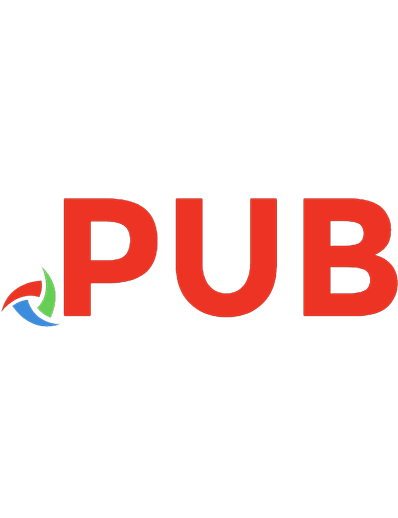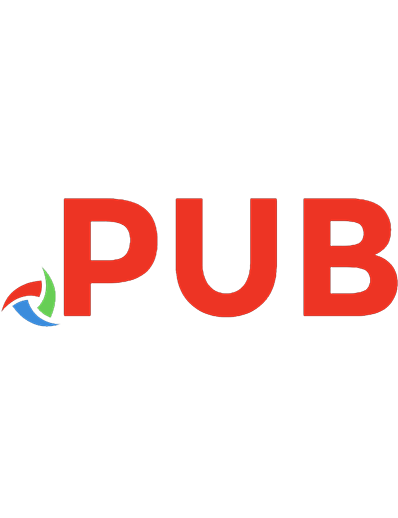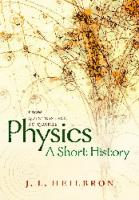From Quarks and Gluons to Quantum Gravity: proceedings of the International School of Subnuclear Physics 9812386130, 2003065685
348 93 5MB
English Pages 448 Year 2004
Table of contents :
Preface
Contents
Mini-Courses on Basics
Lattice Field Theory and SU(N) Gauge Theories -- Michael J. Teper
1. Introduction
1.1 Why the lattice?
1.2 Why SU(N -> ∞) ?
2. Lattice calculations
2.1 Overview
2.2 From lattice to continuum
2.3 Example : the SU(3) mass spectrum
2.4 Glueballs: an aside about the 'real world'
3. The physics of SU(N) gauge theories
3.1 The confining string and its tension
3.2 The mass spectrum
3.3 k-strings
3.4 Some other results
4. Some final remarks
References
DISCUSSION I
DISCUSSION II
Symmetries and Quasi-Particles in Hot QCD -- Chris P. Korthals Altes
1. Introduction
2. Qualitative picture of the transition
2.1 A simple model of the transition
3. Global symmetries, order parameters and the phase transition in QCD
3.1 Universality
3.2 Z(N) symmetry
3.3 Wilson lines, Z{N) symmetry and the deconfining phase transition
3.4 Z(N) universality
3.5 Universality for large number of colours
3.6 The phase diagram of QCD
3.7 Chiral and Z(3) orderparameters in flavoured QCD
4. Canonical Z(N) symmetries in SU(N) gauge theory
4.1 Electric and magnetic fluxes
4.1.1 Electric fluxes
4.1.2 Magnetic fluxes
4.1.3 Behaviour of flux free energies in the confined phase
4.1.4 A simple property of electric and magnetic twisted partition functions
4.1.5 Behaviour of the partition functions in the hot phase
4.2 Breaking canonical Z(N) symmetry
4.3 Intrinsic Z(N) symmetry in 2+1 dimensional Yang-Mills
4.4 The fate of broken Z(N) at high temperature
5. Forces and screening in the plasma
5.1 Electric screening
5.2 An operator formalism as a bookkeeping advice
5.3 Screening of heavy magnetic charges
6. A quantitative method: perturbation theory and dimensional reduction
6.1 Integrating out the hard modes
6.2 Integrating out the electric screening scales
7. Dimensional reduction at work
7.1 Spatial Wilson loop and magnetic screening mass: a window on the magnetic sector
7.1.1 The magnetic screening mass
7.2 The Debye mass
7.3 Spatial 't Hooft loop
7.3.1 The strategy for computing ρ_k(T)
7.3.2 Effective potential for constant profile
7.3.3 Varying profile and gradient expansion
7.4 Pressure
8. Flux of quasi-particles as seen by spatial Wilson and 't Hooft loops
8.1 Gluon flux and the 't Hooft loop scaling law
8.2 Magnetic flux and k-scaling of the spatial Wilson loop
9. Epilogue
10. Suggestions for further reading
Acknowledgements
Appendix A: Free energy of heavy source and Wilson line average
References
DISCUSSION
Physics of QCD Instantons -- E.V.Shuryak
1. Introduction
2. Instantons and chiral symmetries
2.1 The topological barrier and tunneling
2.2 Chiral symmetries and their breaking
2.3 The instanton liquid model
3. What instantons can do: a brief summary
4. Two-point correlation functions: τ decays
5. Three-point correlators: the pion form-factor
6. Instantons at large N_c
6.1 Naive counting and expectations
7. The RHIC puzzles
7.1 Two main puzzles
7.2 Theory Overview
8 Quantum mechanics of the glue, in vacuum and high energy collisions
8.1 The main idea
8.2 Turning states as a conditional minimum
8.3 Explosive behavior of the turning states
8.4 Are there topological clusters in pp collisions?
8. 5 Toward the semiclassical description of high energy collisions
9. Acknowledgments
DISCUSSION I
DISCUSSION II
DISCUSSION III
Erice Lectures on Confinement and Duality -- Matthew J. Strassler
Contents
1. Confinement: an overview
1.1 Some preliminary questions
1.2 Confinement in pure Yang-Mills
2. Confinement of Magnetic Flux
3. Duality, Sources and Fluxes
3.1 Electric Sources and Fluxes
3.2 Magnetic Sources and Fluxes
3.3 Conclusion
4. Duality and Confinement
4.1 Duality and QCD
4.2 Seiberg duality for SO(N) gauge theories
4.3 Confinement or not?
4.4 Spinor sources from the dual point of view
4.5 Conclusion
References
DISCUSSION I
DISCUSSION II
Probing Grand Unification Through Neutrino Oscillations, Leptogenesis, and Proton Decay -- Jogesh C. Pati
1. Introduction And An Overview
2. MSSM Versus String Unifications: G(224) Versus S0(10) as Effective Symmetries
3. Link Between Fermion Masses and Neutrino Oscillations within a G(224)/ SO(10) Framework
4. Leptogenesis
5. Proton Decay: The Hallmark of Grand Unification
5.1 Preliminaries
5.2 Proton Decay Rate
5.3 Section Summary
6. Concluding Remarks
References
DISCUSSION
Status of Super String Theory -- E. Verlinde
DISCUSSION I
DISCUSSION II
Perturbative QUANTUM GRAVITY -- Gerard 't Hooft
1. Introduction
2. Divergences
3. The Wick Rotation
4. The Speculative Part of Quantum Gravity
References
DISCUSSION
Proton structure and its flavor decomposition -- H. Abramowicz
1. Introduction
2. Deep Inelastic Scattering
3. Structure functions and QCD
4. Scaling violation in F_2
5. x dependence of parton distributions
6. Flavor content of the proton
7. Constraints from DIS data
8. Constraints from hadronic collisions
9. Summary of flavor decomposition
10. Gluons
11. Proton structure
12. Future
Acknowledgements
References
DISCUSSION
Experimental Highlights
Selected Highlights from the First Heavy Ion Runs at RHIC -- Timothy J. Hallman
References
Highlights from Gran Sasso -- A. Bettini
1. Introduction
2. The Gran Sasso Laboratory (LNGS)
3. The Search for Cold Dark Matter
4. The New Neutrino Physics
5. Neutrino masses from cosmology
6. An interlude on neutrino masses
7. Neutrino masses from double beta decay
8. Neutrinos from the Sun and their spectrum
9. Solar neutrinos experiments
10. Neutrinos from Supernovae
11. Laboratory neutrinos. CNGS, OPERA and ICARUS
12. Conclusions
References
DISCUSSION
Experimental Highlights from Super-Kamiokande -- Y. Totsuka
DISCUSSION
The Fermilab Experimental Physics Program -- R. Tschirhart
DISCUSSION
New Talents Sessions
Interpretation of the Search for Neutral Higgs Bosons at OPAL in a CP Violating MSSM Scenario -- Philip Bechtle
1. Introduction to a CP violating MSSM
2. The CP-Violating Benchmark Scenario
3. Contributing Search Channels
4. Interpretation of the Search Results within the CPX Scenario
4.1 Combination Method
4.2 Results
5. Summary
References
Application of the Large-N_c limit to a Chiral Lagrangian with Resonances -- Oscar Cata
1. Introduction
2. Chiral Perturbation Theory
3. Adding Resonances
4. Integrating out Resonances
5. The Large-N_c limit
6. Large-N_c applied to the model
7. An Example: L_{10}
8. Conclusions
Acknowledgements
References
Towards the Finite Temperature GluonPropagator in Landau Gauge Yang-Mills Theory -- A. Maas
1. Introduction
2. Gluon and ghost propagator equations
2.1 Dyson-Schwinger equations
2.2 Gauge symmetry
2.3 Kugo-Ojima confinement criterion
3. Results at zero temperature
4. Extension to finite temperature
4.1 Formulation
4.2 Gauge symmetry
5. The high-temperature limit
5.1 Definition of the high-temperature limit
5.2 Comparison to three-dimensional Yang-Mills theory
6. Summary and outlook
Acknowledgments
References
Hermes Measurements of the Nucleon Spin Structure -- J. Wendland
1. Introduction
2. Inclusive Spin Asymmetries
3. Semi-Inclusive Spin Asymmetries
4. Conclusion
References
DIPLOMAS
AWARDS
PARTICIPANTS









![From Quarks to Quasars: Philosophical Problems of Modern Physics [1 ed.]
0822984946, 9780822984948, 0822935155](https://dokumen.pub/img/200x200/from-quarks-to-quasars-philosophical-problems-of-modern-physics-1nbsped-0822984946-9780822984948-0822935155.jpg)
